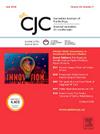Effect of Life’s Essential 8 and Exposure to Solid Fuels for Cooking on Cardiovascular Disease Risk
IF 5.3
2区 医学
Q1 CARDIAC & CARDIOVASCULAR SYSTEMS
引用次数: 0
Abstract
Background
Few studies have examined the association between Life’s Essential 8 (LE8) scores and cardiovascular disease (CVD) risk in less-developed countries. In this study we aimed to assess the relationship between LE8 levels and CVD and evaluate whether LE8 modifies the association between exposure to solid cooking fuels and CVD.
Methods
A cross-sectional analysis was conducted using data extracted from the China Multi-Ethnic Cohort. Cardiovascular health was scored using LE8 and categorized as low, moderate, and high. Exposure to solid fuels for cooking was classified as no exposure, intermediate exposure, and heavy exposure.
Results
Among 89,772 participants, 4444 (5.0%) had CVD. Higher LE8 scores were associated with lower CVD risk after full covariate adjustment. The adjusted odds ratios (95% confidence intervals [CIs]) for the moderate and high LE8 groups were 0.82 (0.74-0.89) and 0.73 (0.66-0.81), respectively (P for trend < 0.001). Compared with no exposure, heavy exposure to solid fuels was associated with a higher CVD risk (odds ratio, 1.21 [95% CI, 1.06-1.40]; P = 0.004). A significant interaction was observed between the LE8 score and solid fuel exposure (P for interaction = 0.01). The inverse association between LE8 and CVD was the strongest among those with no exposure to solid fuels (odds ratio, 0.80 [95% CI, 0.71-0.91]).
Conclusions
High LE8 scores are associated with reduced CVD risk, particularly among participants with no exposure to solid fuels for cooking.
生活必需品和接触固体燃料烹饪对心血管疾病风险的影响。
背景:在欠发达国家,很少有研究调查生命基本8 (LE8)评分与心血管疾病(CVD)风险之间的关系。本研究旨在评估LE8水平与心血管疾病之间的关系,并评估LE8是否改变了固体烹饪燃料暴露与心血管疾病之间的关系。方法:采用从中国多民族队列中提取的数据进行横断面分析。心血管健康用LE8评分,分为低、中、高三个等级。为烹饪而接触固体燃料被分为无接触、中度接触和重度接触。结果:在89772名参与者中,4444名(5.0%)患有心血管疾病。全协变量调整后,高LE8评分与低CVD风险相关。中等和高LE8组的校正优势比(95%置信区间)分别为0.82(0.74 ~ 0.89)和0.73 (0.66 ~ 0.81)(p趋势< 0.001)。与不接触固体燃料相比,重度接触固体燃料与更高的心血管疾病风险相关(1.21 [1.06-1.40],P = 0.004)。LE8评分与固体燃料暴露之间存在显著交互作用(p交互作用= 0.01)。在没有接触固体燃料的人群中,LE8与CVD之间的负相关最强(0.80[0.71-0.91])。结论:高LE8评分与降低心血管疾病风险相关,特别是在没有接触固体燃料烹饪的参与者中。
本文章由计算机程序翻译,如有差异,请以英文原文为准。
求助全文
约1分钟内获得全文
求助全文
来源期刊

Canadian Journal of Cardiology
医学-心血管系统
CiteScore
9.20
自引率
8.10%
发文量
546
审稿时长
32 days
期刊介绍:
The Canadian Journal of Cardiology (CJC) is the official journal of the Canadian Cardiovascular Society (CCS). The CJC is a vehicle for the international dissemination of new knowledge in cardiology and cardiovascular science, particularly serving as the major venue for Canadian cardiovascular medicine.
 求助内容:
求助内容: 应助结果提醒方式:
应助结果提醒方式:


